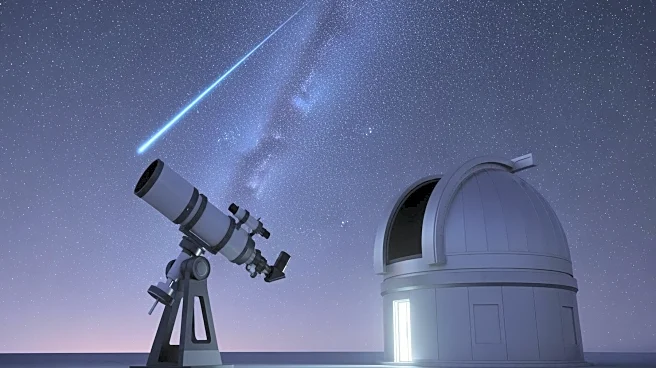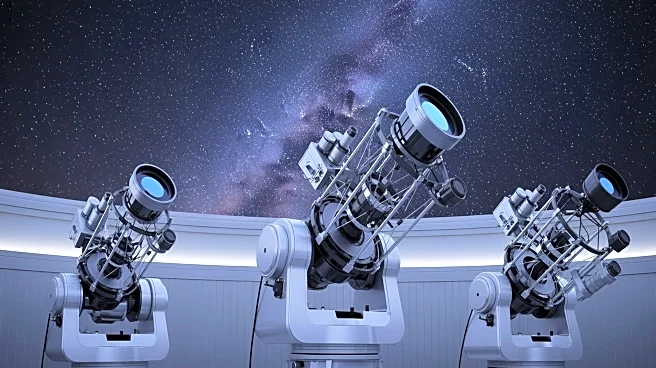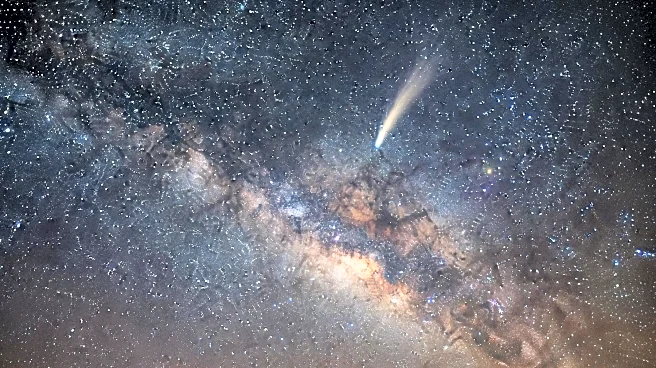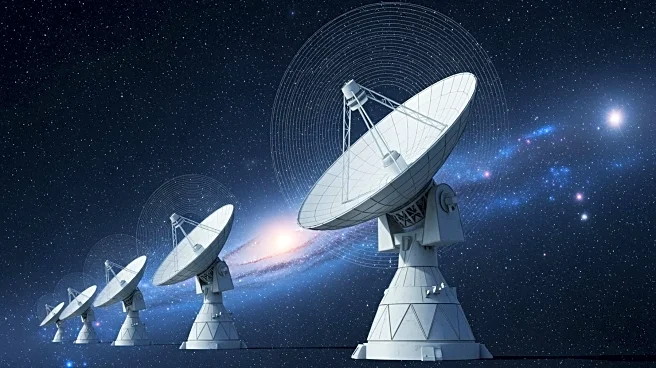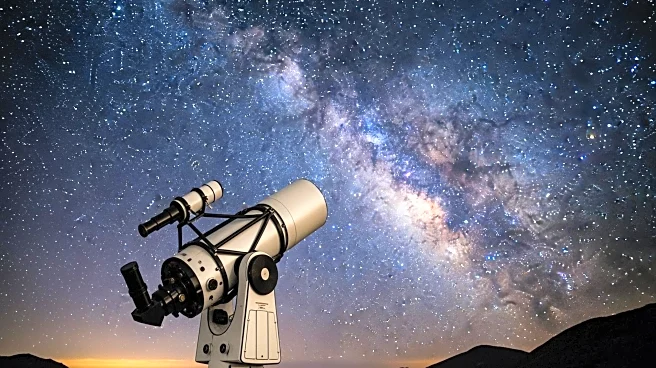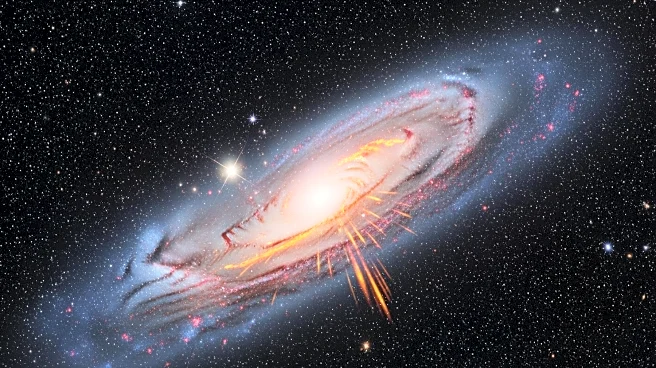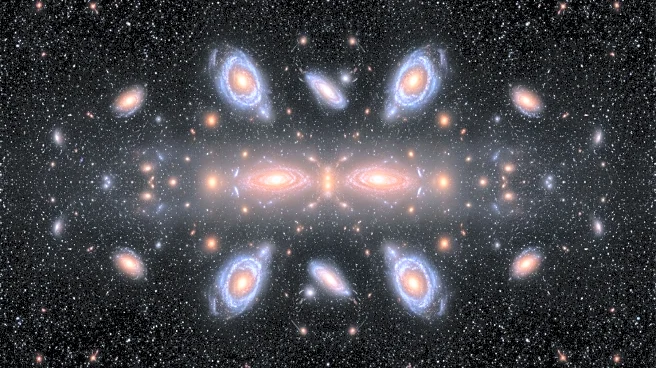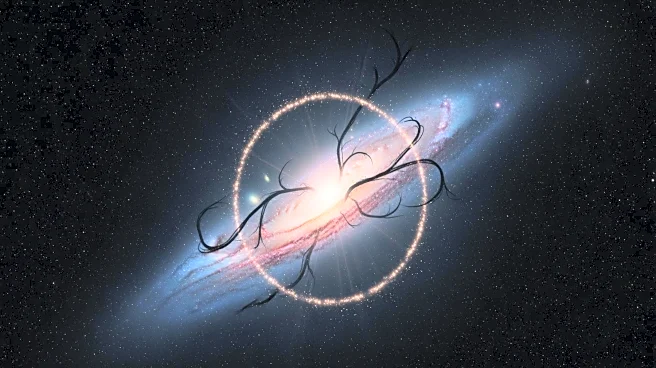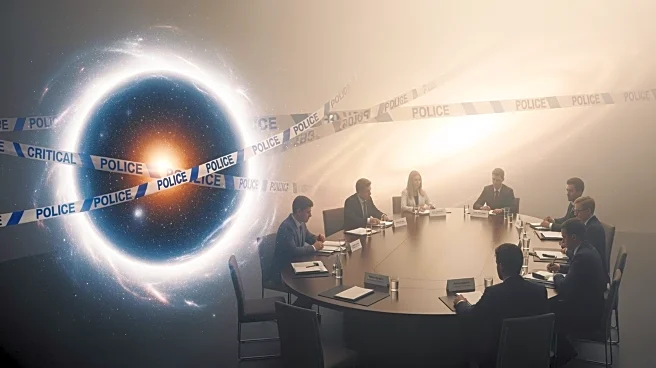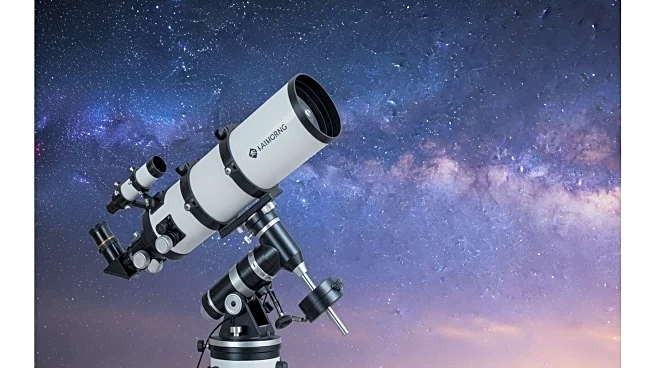What's Happening?
The Vera C. Rubin Observatory, located in the Chilean Andes, is set to embark on a decade-long mission to observe the night sky. This initiative, known as the Legacy Survey of Space and Time (LSST), aims
to track millions of celestial events every night, providing unprecedented insights into the universe's dynamic nature. The observatory features the Simonyi Survey Telescope, equipped with an 8.4-meter mirror and the largest digital camera ever created for astronomy, the 3.2-gigapixel LSST Camera. This advanced setup will allow the observatory to scan the southern sky every three nights, capturing the brightness, position, and movement of billions of objects. The observatory honors Vera C. Rubin, whose research confirmed the presence of dark matter, and aims to further explore the structure and behavior of galaxies.
Why It's Important?
The Vera C. Rubin Observatory's mission is significant for the field of astronomy and cosmology. By tracking billions of celestial objects, the observatory will provide a comprehensive, real-time record of the changing sky, enhancing our understanding of the universe's evolution. This data will be crucial in studying dark matter, an invisible substance that constitutes the majority of matter in the universe. The observatory's findings could lead to breakthroughs in understanding how dark matter interacts with visible matter, potentially reshaping theories in cosmology. The project also represents a major technological advancement, with its ability to handle and analyze vast amounts of data, setting a new standard for astronomical research.
What's Next?
As the Vera C. Rubin Observatory begins its mission, astronomers and researchers will focus on analyzing the data collected to uncover new insights into the universe. The observatory's findings are expected to contribute to ongoing research in dark matter and galaxy formation. The specialized software system, known as the data butler, will play a crucial role in managing the nightly influx of data, allowing scientists to concentrate on scientific discoveries rather than data management. The observatory's work will likely influence future astronomical projects and collaborations, as it sets a precedent for large-scale, real-time sky surveys.
Beyond the Headlines
The Vera C. Rubin Observatory's mission not only advances scientific knowledge but also honors the legacy of Vera C. Rubin, a pioneering astrophysicist. Her work on galactic rotation curves was instrumental in confirming the existence of dark matter, and the observatory continues her legacy by exploring the universe's mysteries. The project highlights the importance of investing in scientific research and technology to push the boundaries of human understanding. It also underscores the collaborative nature of astronomy, as the observatory's findings will be shared with the global scientific community, fostering international cooperation in the quest to unravel the universe's secrets.
